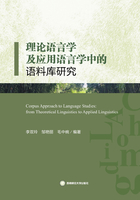
3. Methodology
1)Research questions
a. Which methods does Goldblatt adopt when translating“donkey”?
b. What image of “donkey”does Goldblatt present in his translation?
2)Data
The data used in the current research is around 310,000 words, consisting of Goldblatt's translations of two novels of Mo Yan:Red Sorghum, published in 1994 by Penguin Books, and The Republic of Wine by Arcade Publishing in 2012. The original works, characterized by irony, vulgar languages and symbols, are the reflections of the rural China, the bribery of the contemporary society, and the corruption of the official circles. The research used two kinds of materials, one bilingual and comparative, the other English and parallel. The monolingual data contained the two English versions, while the bilingual one consisted of both English and Chinese parts. All texts kept the total body.
This paper aims to investigate the image of “donkey”in the English part. However, the bilingual material is not always parallel, attributing to some abridgment for sentences and paragraphs in the English texts. Fortunately, those abridgments might have no significant impact on the research results, for manual check proved that Goldblatt just left out some unnecessary scenery descriptions, details of trivial events and tangential acts or groundless talks of a person. Apart from the probe of the collocates of donkey(s)in the texts, the research pays attention to lexicons like mule and animal.
3)Research procedure
The current study was conducted in three main stages:hits and collocates of donkey(s), a data-driven analysis of sentences with specific images of “donkey” and the probe of the translation strategies for “donkey”.
The first stage, firstly, is to find the whole tokens of donkey(s)in the English material by inputting“donkey*”in the Concordance Section of Antconc 3.4.3, a free assistant instrument for analysing comparative small monolingual corpora, explored by Laurence Anthony in 2002. A word suffixes a spark mark containing the word itself and all other types of inflections. Therefore, inputting“donkey*”represents searching donkey and donkeys in the texts. Hits of donkey in the original Chinese texts could be searched in Word. Secondly, the top 100 out of 303 collocates of donkey(s)were selected from the English texts with a high level of standard that the ranking list was shown by frequency,5 spaces on each ends of the node word, and 2 for the minimal frequency in order to avoid any coincidence.
The second stage is to investigate sentences of donkey(s)with specific meaningful images. Again Antconc was used. Firstly, it analysed the whole 303 collocates in which 36 were associated the image of “donkey”. The 36 collocates were classified as six types. Secondly,266 concord ances of donkey(s)were in the English texts. The study takes 8 concordances that were with specific figurative or contextual meanings as examples. Both the first two stages used Antconc and the English material.
Stage 3 was done by the bilingual data and Tmxmall online, an assistant tool for translation which dedicates text-aligning for two different languages. However, manual participation must be required when lining up texts of diverse languages for the massive deletion and a small amount of addition in Goldblatt's translation. In spite of some adjustments for the Chinese material such as deleting those mismatching contents and placed the added English contents in the preceding paragraphs or the following paragraphs, the changes might have no impact on the research results, for such deletions were about the scenery description, the acts and speaking of a person or the details of an event, none of which were associated with the image of “donkey”. The analysis concerns two aspects:the different contextual meanings of “donkey”between two materials; the more lexical meaning of “donkey”in Goldblatt's translation.